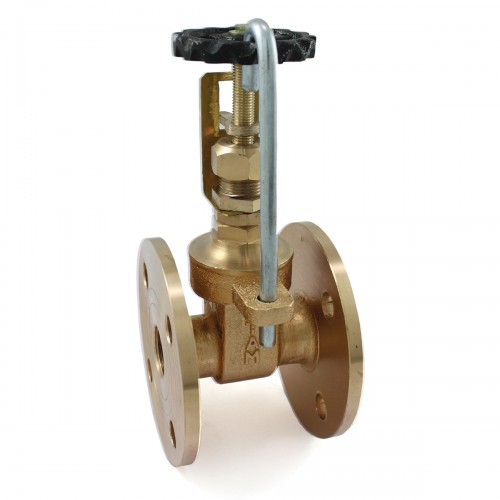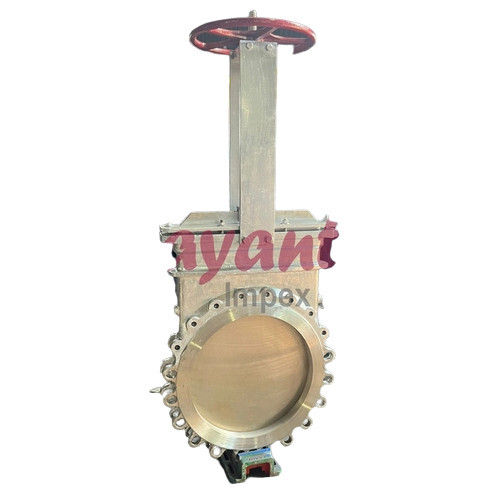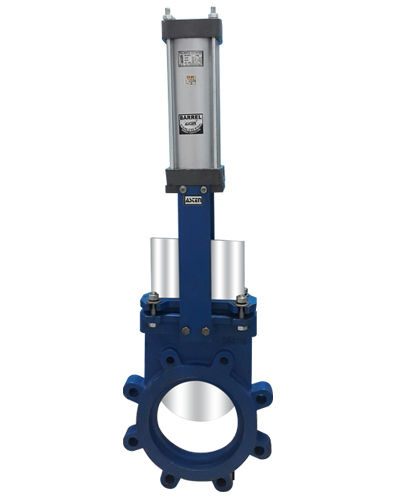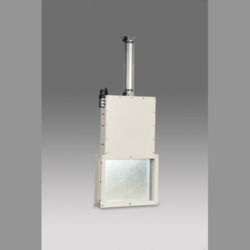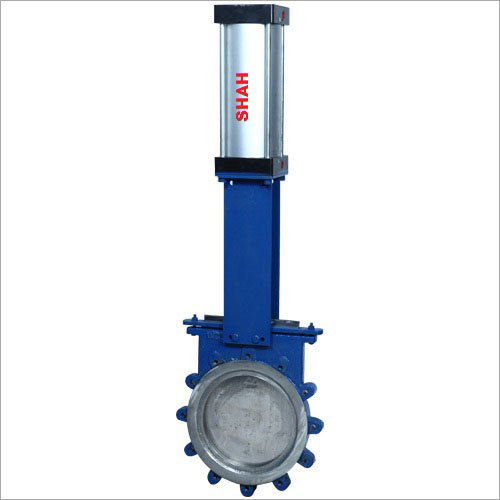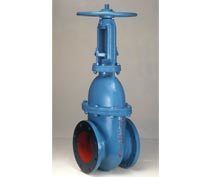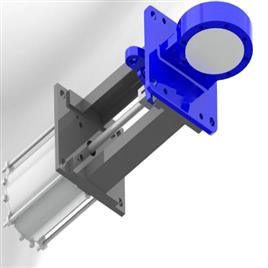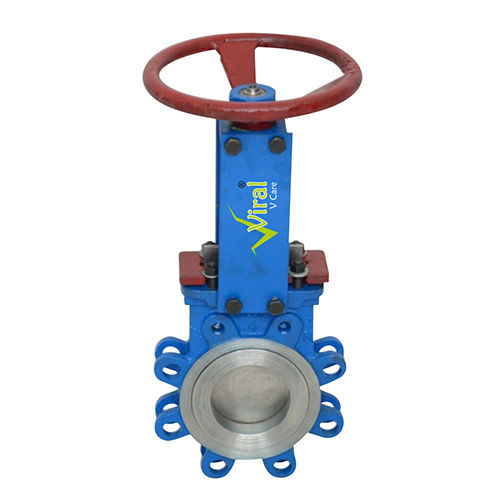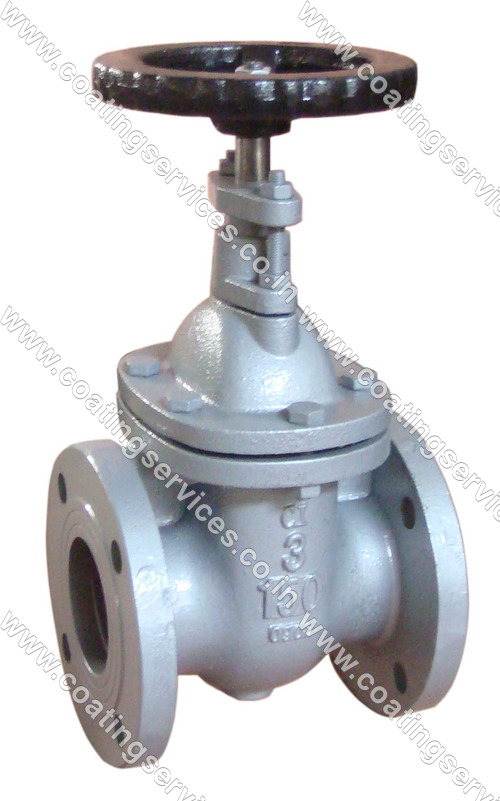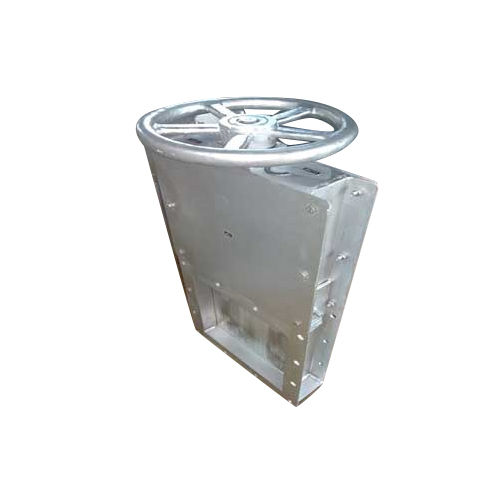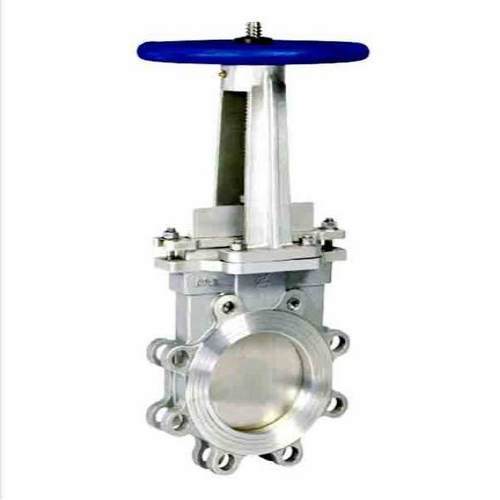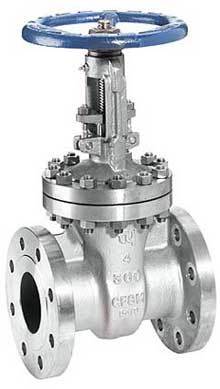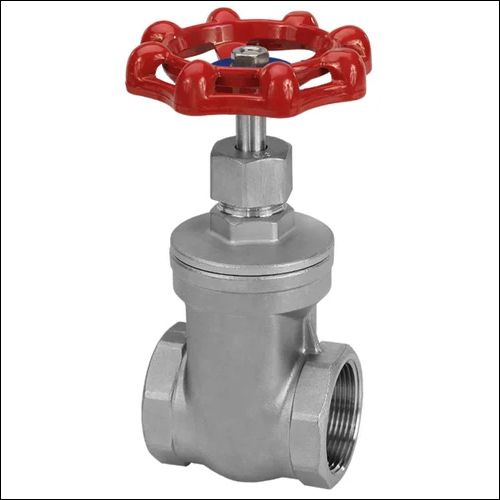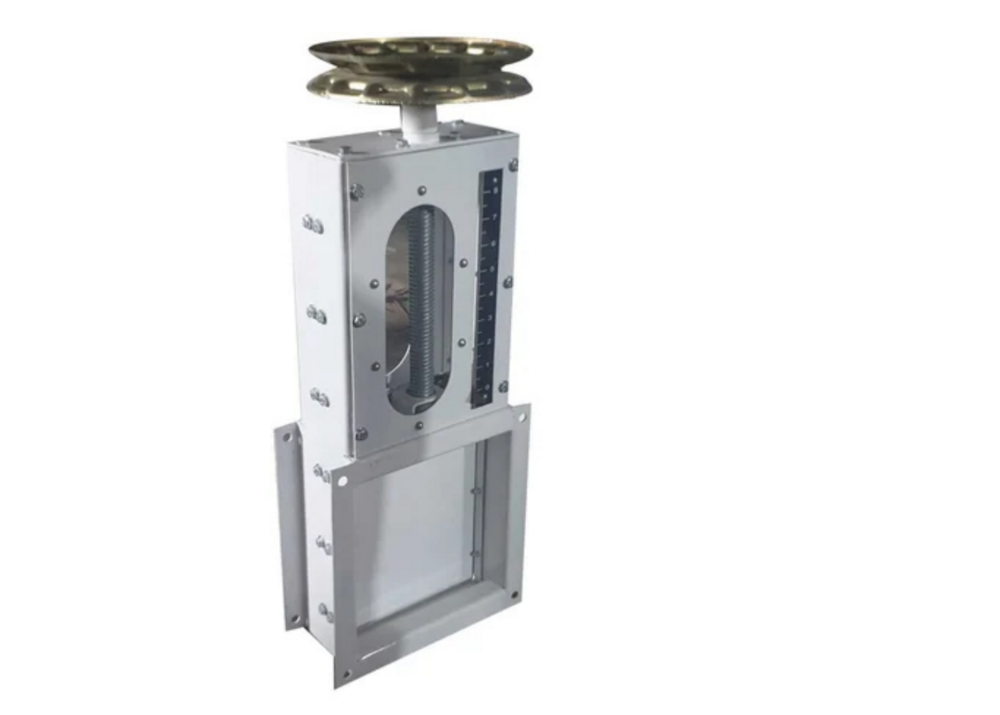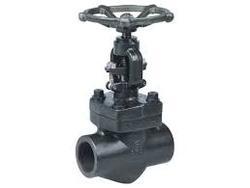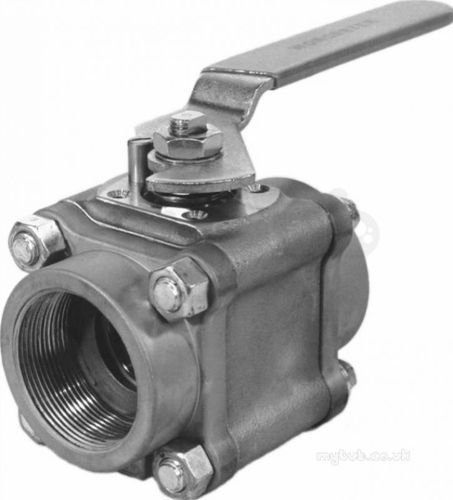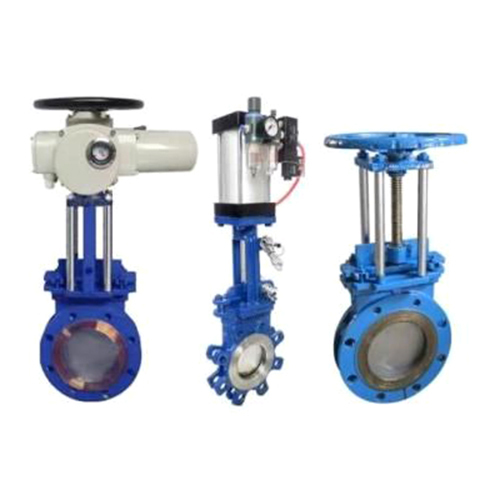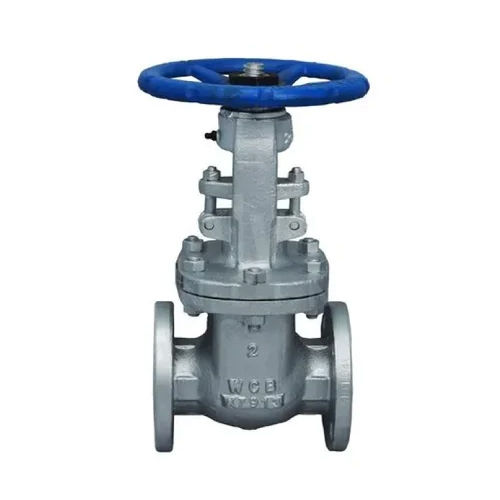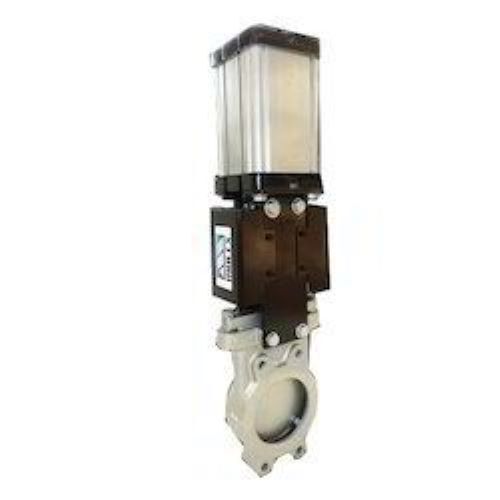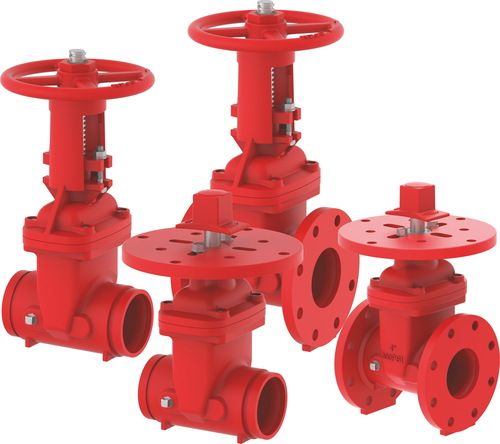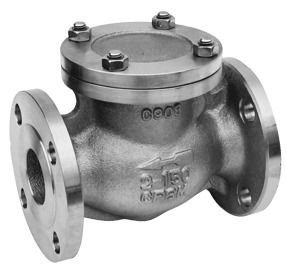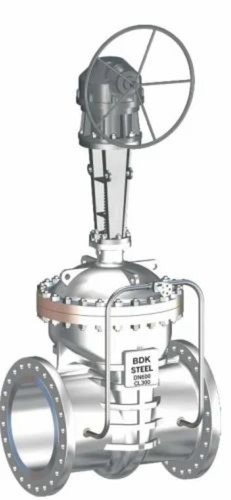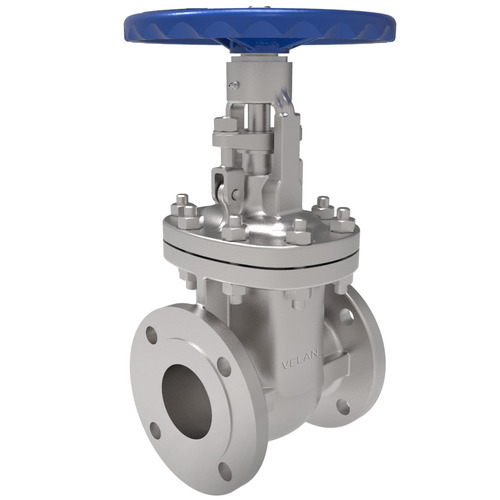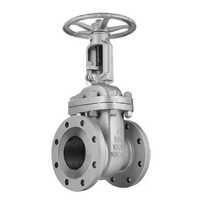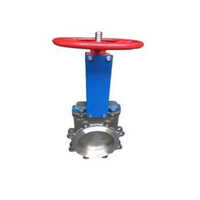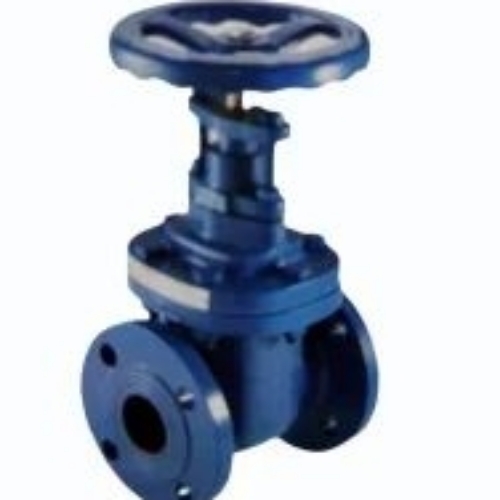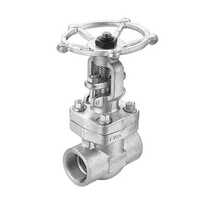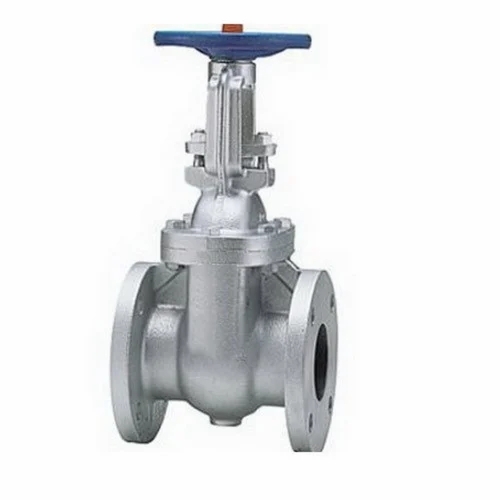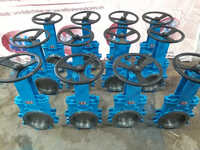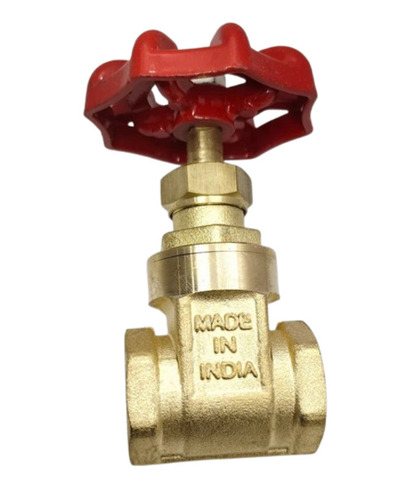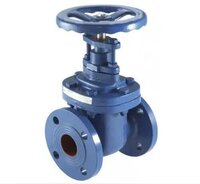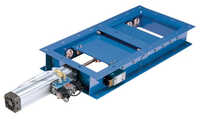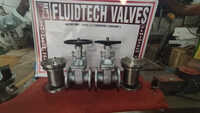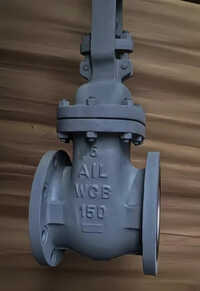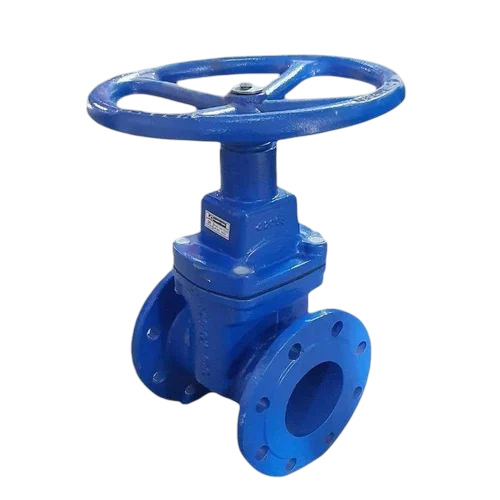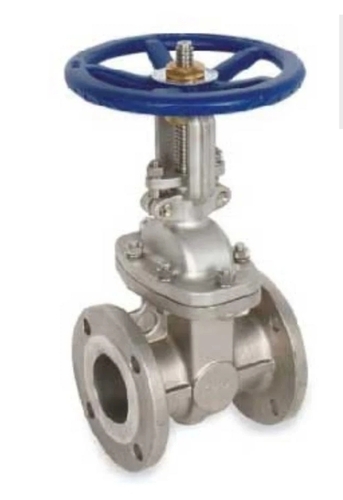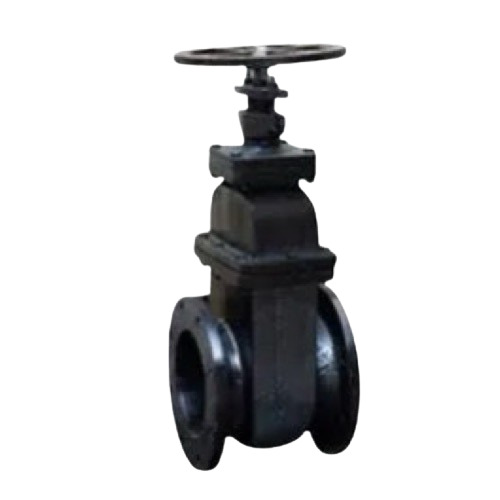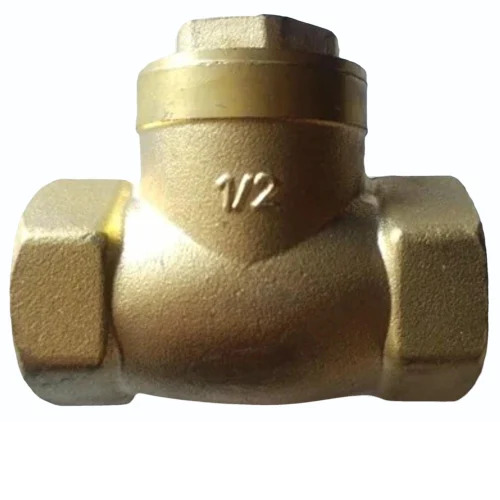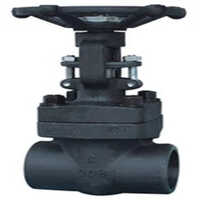Gate Valves
(4102 products)Gate Valve - Application: Industrial
Round
Silver
Different Size
Gate Valve
Industrial
Industrial
Bronze Gate Valve (Flanged Ends), Pn 10 Application: Water
MOQ50 , Piece/Pieces
SealingINTEGRAL SEAT
Usagewater, oil
Applicationwater , oil
StructureGate
TypeGATE VALVES
PowerHydraulic
Casting Flange Type Knife Gate Valve
Price Trend: 350000.00 - 1050000.00 INR/Unit
MOQ1 Unit/Units
StructureGate
ConnectionOther
Size2 inch to 48 inch
MaterialCasting
TypeWedge Gate Valve
Power SourceManual
Jayant Impex
Mumbai
 Super Bonanza
Super Bonanza Trusted Seller
Trusted Seller4 Years
Pneumatic Cylinder Operated Knife Gate Valve
Product DescriptionGiving priority to our valued patron's demand, we are engaged as manufacturer, supplier and exporter of Pneumatic Cylinder Operated Knife Gate Valve in Ahmedabad, Gujarat, India.\015\012\015\012Specifications:\015\012Body : Solid One Piece Casting of CI, CS, CF8, CF8M\015\012Gate : AISI SS 304 / 316
Asten Controls Llp
Ahmedabad
 Trusted Seller
Trusted Seller Super Seller
Super Seller9 Years
Rapidrop Fig.133FF Valve - Ductile Iron, Lightweight Design | Manual Operation, Red Finish, Corrosion Resistant Components
Price: 10000 INR/Unit
MOQ10 Unit/Units
ColorRed
Product TypeGate Valves
MediaWater
Rapidrop India
Navi Mumbai
 Trusted Seller
Trusted Seller Super Seller
Super Seller8 Years
Krishna Grain Systems Pvt. Ltd.
Pune
 Trusted Seller
Trusted Seller Super Seller
Super Seller3 Years
24 Inch Stainless Steel Gate Valve - Color: Silver
Price: 4350.0 INR/Unit
MOQ1 Unit/Units
ColorSilver
StructureGate
UsageIndustrial
MaterialStainless Steel
Size24
Product TypeStainless Steel Gate Valve
Skywin Valve Private Limited
Ahmedabad
 Trusted Seller
Trusted Seller Super Seller
Super Seller Premium Seller
Premium Seller4 Years
Pneumatic Knife Edge Gate Valve - Color: Blue And Silver
Price: 500 INR/Piece
MOQ10 , Piece/Pieces
UsageMachinery
MaterialStainless Steel
SizeStandard
Product TypePneumatic Knife Edge Gate Valve
MediaWater
ColorBlue and Silver
Z-tork Automation Co
Ahmedabad
 Trusted Seller
Trusted Seller Super Seller
Super Seller7 Years
Rising Spindle Gate Valve - Rising/Non-Rising Spindle Type, Clear Water Up To 450C | Designed For Water Works, Stress Analysis Validated
Product DescriptionFocused on qualitative products and consumer satisfaction with support of our top grade staff, we are engaged in exporting, distributing, trading and supplying a wide gamut of Rising Spindle Gate Valve from Kolkata, West Bengal, India. These gate valves being provided by us are available in non risi
Debson Pumps Pvt Ltd
Kolkata
 Trusted Seller
Trusted Seller Super Seller
Super Seller6 Years
Gate Valve - Stainless Steel Forged, 1/2 Inch to 18 Inch | Controlling Liquid Flow, Available Sub Parts
ColorBlack
SizeMany
Product TypeControlling Liquid Flow
MaterialStainless Steel
TechniqueForged
ConnectionOther
Shree Rajlaxmi Forge
Mumbai
 Trusted Seller
Trusted Seller Super Seller
Super Seller7 Years
Knight Gate Valve - Cast Iron Body, 100x50x200 mm Dimensions | Stainless Steel Gate, 100 psi Operating Pressure, Pneumatic Actuator, 0-80°C Temperature Range
Product DescriptionKnight Gate Valve
Rathi Engineering Solutions Private Limited
Pune
 Trusted Seller
Trusted Seller Premium Seller
Premium Seller3 Years
Gray & Golden Gate Valve
MOQ1 Piece/Pieces
Product TypeGate Valve
UsageIndustrial
ColorGray & Golden
MaterialOther, Mild Steel
MediaWater
ShapeRound
Alpha Trading Co.
Kolkata
 Trusted Seller
Trusted Seller Premium Seller
Premium Seller16 Years
Blue-Red Knife Edge Gate Valve With Manual Operating
MOQ1 Piece/Pieces
StructureGate
UsageIndustrial
SizeStandard
Power SourceManual
Product TypeKnife Edge Gate Valve With Manual Operating
ColorBlue-Red
Viral Enterprise
Valsad
 Trusted Seller
Trusted Seller Premium Seller
Premium Seller14 Years
Cast Gate Valve - Durable Cast Iron Material | High Flow Capacity, Corrosion Resistant Design, Versatile Application
Product DescriptionCast Gate Valve
Aaa Industries
Mumbai
 Trusted Seller
Trusted Seller Premium Seller
Premium Seller15 Years
Slide Gate Valves - Color: Silver
Price: 8000 INR/Unit
MOQ1 Unit/Units
ColorSilver
Size200x200, 300x300, 350x350 , 400x400 , 500x500 , mm
UsageIndustrial
Product TypeSlide Gate Valves
MaterialStainless Steel
Power SourceManual
Rotech Engineers
Pune
 Trusted Seller
Trusted Seller Super Seller
Super Seller3 Years
Pneumatic Knife Gate Valve - Metal, Standard Size, Silver Color | Perfect for Water Supply, Low-Allowable Leakage, Designed for Slurries and Pneumatic Conveying Systems
Price: 3250 INR/Unit
MOQ100 , Unit/Units
Product TypePneumatic Knife Gate Valve
UsageWater supply
SizeStandard
ColorSilver
MaterialOther, Metal
TypeOther, Pneumatic Knife Gate Valve
Aircon Pneumatics
Dombivli
 Trusted Seller
Trusted Seller Super Seller
Super Seller5 Years
Indian Gate Valve
Product DescriptionWe devoted with Supplying and Trading an professional and considerable variety of Gate Valve in Ahmedabad, Gujarat, India, which are made by working with excellent crude material. These Gate Valve are currently employed for various objective due to its long lasting pursuits and strength. This ranges
Guru Marketing
Ahmedabad
 Trusted Seller
Trusted Seller Super Seller
Super Seller4 Years
Stainless Steel Gate Valves
Price: 1000 INR/Piece
MOQ50 Piece/Pieces
UsageIndustrial Use
ColorGrey
StructureBall
Product TypeStainless Steel Gate Valves
Size1/2" to 2"
ConnectionThread
Bhagyalaxmi Engineering Works
Ahmedabad
 Trusted Seller
Trusted Seller Premium Seller
Premium Seller9 Years
150 Mm Pneumatic Manual Slide Gate Valve - Color: Requirement Based
Price: 5000 INR/Unit
MOQ1 Unit/Units
SealingSealed
Sizerequirement based
Voltagerequirement based Ohm (ohm)
UsageIndustrial
MaterialStainless Steel
Product Typerequirement based
Alfa Agro Industries
Bagpat
 Trusted Seller
Trusted Seller Premium Seller
Premium Seller2 Years
High Quality Gate Valves - Durable Brass Construction | Customizable Specifications for Diverse Industrial Applications
MOQ40 Piece/Pieces
Payment TermsCash on Delivery (COD), Days after Acceptance (DA), Cash Against Delivery (CAD), Letter of Credit (L/C), Delivery Point (DP), Cash in Advance (CID), Cheque, Cash Advance (CA)
Sample AvailableYes
Sample PolicyContact us for information regarding our sample policy
Steam & Power Engineers
Pune
 Trusted Seller
Trusted Seller Premium Seller
Premium Seller13 Years
Stainless Steel Gate Valve - 20 mm Size, High Pressure, Flanged End Connection | API-600, Fire Safe, Bolted Pressure Seal Bonnet, Flexible Wedge
ConnectionFlange Type
Size20 mm
UsageAir
MaterialStainless Steel
Power SourceManual
Product TypeValve
Parmar Steel
Mumbai
 Trusted Seller
Trusted Seller Premium Seller
Premium Seller2 Years
Gate Valve - API 600 Rated, Flanged & Butt-Weld Ends - Rugged Durability, Flexible Wedge Design, Tight Sealing
Price Trend: 5000.00 - 30000.00 INR/Unit
MOQ5 Unit/Units
Supply Ability200 Per Month
Delivery Time7 Days
Sqk Valves Fittings & Automation Private Limited
Navi Mumbai
 Trusted Seller
Trusted Seller Super Seller
Super Seller6 Years
High Pressure Ball Valve - Alloy Material, Flanged Connection, Port Size 50-400 | Superior Performance for WOG Applications, ISO 9001 Certified
Price: >500 INR/Piece
MOQ1 Piece/Pieces
StructureBall
PressureHigh Pressure
ConnectionFLANGED
MaterialAlloy
Port Size50-400
Flange150, 300, 600
S.H.INDUSTRIAL Needs
Chennai
 Trusted Seller
Trusted Seller Premium Seller
Premium Seller6 Years
Carbon Steel Knife Gate Valve - Color: Blue Paint Coated
Price: 20000.0 INR/Unit
MOQ1 Unit/Units
StructureGate
ColorAS PER THE REQUIRMENT
SealingPTFE
Size200 TO 800
Voltage415 Volt (v)
ConnectionOther
Sai Shukla Engineering & Company
Pune
 Trusted Seller
Trusted Seller Premium Seller
Premium Seller1 Years
Cast Steel Gate Valve - Carbon Steel, 2 Inch Size | Polished Silver Finish, Ideal for Industrial Use
Price: 2500 INR/Unit
MOQ1 Unit/Units
ColorSilver
Size2 inch
UsageIndustrial
Product TypeCast Steel Gate Valve
MaterialCarbon Steel
SurfacePolished
Sethia Sales & Services
Cuttack
 Trusted Seller
Trusted Seller Premium Seller
Premium Seller2 Years
Efficient Knife Gate Valves - Size: 2.5"
Price: 7000 INR/Piece
MOQ50 Piece/Pieces
Size2.5",3",4" & 6"
ColorSilver and Black
Usageindustrial
MaterialStainless Steel
TypeWedge Gate Valve
Product TypeEfficient Knife Gate Valves
Whale Enterprise Pvt Ltd
Coimbatore
 Trusted Seller
Trusted Seller Premium Seller
Premium Seller2 Years
Cast Steel Knife Edge Gate Valve - Color: Blue
Price: 175000 INR/Unit
MOQ10 Unit/Units
ColorBlue
StructureGate
UsageIndustrial
MaterialStainless Steel
Size400 mm
Power SourceElectrical
Halcyon Valves Automation
Howrah
 Trusted Seller
Trusted Seller4 Years
Industrial Manual Casted Gate Valves
StructureGate
ColorRed
Product TypeGate Valves
UsageUsed to completely shut off fluid flow
MaterialCast Iron
Power SourceManual
AIRA Gate Valves
Product DescriptionWe are Bengaluru, Karnataka, India based one of the most trusted exporters, suppliers and traders of a comprehensive range of Gate Valves which is highly demanded by our customers for its various characteristics including easy usability, compact design, longer service life, etc. The offered Gate Val
Aira Trex Solutions India Private Limited
Bengaluru
 Trusted Seller
Trusted Seller Super Seller
Super Seller4 Years
Gun Metal Gate Valve - Gun Metal, Various Sizes Available, Powder Coated Finish | Affordable Solution for Water Applications
Price: 300/Piece
MOQ1 Piece/Pieces
Sizevariious sizes are available
MaterialStainless Steel
Port SizeVarious sizes are available
Metro Valves And Fittings
Ahmedabad
 Trusted Seller
Trusted Seller Premium Seller
Premium Seller4 Years
Latest From Gate Valves
Popular Gate Valves
What Is Gate Valves? Types and Parts
To completely stop the flow of fluid in a pipeline or, alternatively, to allow full flow when the valve is fully open, a gate valve is commonly utilized. Thus it is employed either in the fully closed or fully open states. A gate valve comprises of a valve body, seat and disc, a spindle, gland, and a wheel for working the valve. The seat and the gate together fulfil the function of shutting off the flow of fluid. The disc of a gate valve is totally isolated from the fluid when the valve is fully open. Therefore, there is hardly any impediment to the flow. As a result, the pressure loss caused by fluid passing through a gate valve is negligible.
Here are some different kinds of gate valves:
1. Split Wedge Valves
The split wedge is made up of two discs joined together mechanically along a parallel axis.
Both a which-shift and a parallel-disc disc can be present. Even once the fluid is heated, it is not possible to generate a thermal blend.
2. Flexible Wedge Valves
Cuts in the disc's periphery make it flexible, allowing it to withstand the force of heat without deforming. Each and every one of the cuts varies in terms of size, form, and depth.
Because of this, it's also a bit more sturdy. The alignment of the Seat is also optimised by this method, making it more resistant to leaks.
3. Solid Wedge Valves
The solid wedge is one of the earliest and most prevalent types of Gate Valves still in use today. Both horizontal and vertical installations are possible, and it can handle a wide variety of fluids. A turbulent flow is no problem for it.
The problem is that there is a tendency for it to start choking due to thermal expansion inside the pipe, making it more prone to leaking. Because the metal expanded during heating, the thermal locking wedge could not slide between the seats.
4. Screwed Bonnet Valves
These valves are typically supplied as primary isolation valves and include bonnets with an exterior stem thread.
The needle point on the valve stem is fixed in place and there is a cold rolled surface and a rear seat for easy replacement of the valve seat. The die-forged construction of the valve body ensures its durability.
5. Bolted Bonnet Valves
A globe valve known as a fastened bonnet globe valve has its body cover secured with bolts. To create a seal, either a gasket or an octagonal sealing ring is inserted in the middle of the valve.
Parts of Gate Valves
The part of the gate valve that was mentioned above is explained in detail below.
1. Gate
The gate is available in several forms and technologies to ensure reliable sealing in a wide range of settings, but its basic shape falls into one of two categories parallel or wedge.
Slide gates, slab gates, and expanding gates are all examples of parallel gates. There is a second sort of gate valve called knife gates, and its design is comparable to that of wedge valves.
2. Slab Gates
Through-conduit gate valves, or slab gates, are one-piece gates with a bore-sized opening in the centre. When fully open, the bore is centred between the two ring seats. This arrangement allows for a steady, undisturbed current.
3. Parallel Expanding Gates
Sealing is achieved via mechanical expansion of the gate in expanding gate valves, which consist of two slab gates linked together. When the slab gate is opened, fluid can move freely between the two chambers.
An upward force on one slab and the stopping of the second slab by a step in the valve body provide for the necessary mechanical expansion outward for a satisfactory seal.
4. Seat
The gate valve's seal with the gate is carried out and maintained by two seats. The seat of a gate valve may be a separate component or may be included into the valve body. Valve seat rings are either threaded into place or pressed into place before being sealed welded to the valve body.
The latter structure is preferable for use in higher temperature environments. The valve seat can be either pressed in or threaded into the body of the valve, with the latter two providing greater customization options than their integral counterparts.
5. Parallel Slide Gates
Some gate valves have a parallel arrangement, with the gate flat and the seat parallel. In order to create a reliable seal, parallel gate valves utilise the pressure in the line. In the centre of a pair of flat gates is a spring, forming a three-part structure.
The spring forces the components closer to the seats, improving their ability to seal. Because of its construction, parallel gate valves are more secure in high-temperature settings.
Wedge-shaped gate valves can experience heat binding and expansion limits if there is too much pressure on the seats.
In addition, closing torques are lowered due to the lack of wedging action in parallel gates, which allows for smaller, less manual effort or less expensive actuators. Clean seating surfaces are maintained with sliding parallel gates that trap dirt.
6. Sharpened Gates
The lower surface of a knife gate valve is tapered like a knife, making it ideal for cutting through various materials. These valves don't require regular maintenance because they clean themselves every time they open and close by passing the seat rings.
Gate Valve Vs Ball Valve - Key Difference
Is a ball valve better than a gate valve? Can’t be answered until they first establish what makes the two types of valves distinct from one another. The first thing to keep in mind is that they both perform essentially the same purpose.
Ball valves and gate valves differ mostly in terms of their construction and markings. Ball valves have a stem and ball that turn in a horizontal plane, whereas gate valves open by moving a circular or rectangular gate out of the way of the fluid. The ball valve is a rotational valve because of its feature. The gate and the seats of a gate valve are separated by a sealing surface. They are commonly utilised in situations calling for minimally obstructed, straight-line fluid flow.
Ball valves perform differently than other types of valves because they are quarter-turn valves. To regulate the flow, they employ a hollow ball that is perforated and pilotable. When the hole in the ball is towards the direction of flow, the valve is in the open position. The valve's handle, which is flat and parallel to the flow when open but perpendicular when closed, is used to close the valve. This allows for quick visual verification of the valve's operational status.
Gate Valve vs Butterfly Valve: Key Difference
Differences Between Butterfly Valves and Gate Valves.
-Gate Valves
The primary role of a valve is to act as a gatekeeper, as suggested by the device's name. The gate itself is the most important component of a gate valve. Depending on its position, a gate inside the valve either opens or closes the passageway. The internal gate can be raised or lowered using a screw or lever to facilitate movement. A gate valve can be any size or shape, though typically they are quite big. Consider the water mains and the valves that regulate water flow. Large as they may be, gate valves are intended to be operated by a single person.
-Butterfly Valves
A butterfly valve, a clever variant of the more common gate valve, can be found in a wide range of sizes and configurations. A similar internal gate is used in such a valve. The internal operation of the gate distinguishes this from a traditional gate valve.Similar to the gate valve, the butterfly valve can either allow or restrict flow. It is crucial to consider the pros and cons of each valve type before making a final decision.
Difference Between Gate Valves and Globe Valves
The points can easily tell the difference between a gate valve and a globe valve.
1. Typically, globe valves are used to regulate flow, while gate valves are used to completely shut off the flow.
2. Compared to globe valves, gate valves are more affordable.
3. When in their open state, gate valves allow for a relatively unimpeded flow of whatever media they are designed to control. In contrast, globe valves have high-pressure drops and a lot of resistance to fluid flow.
4. The design of a gate valve is straightforward, while that of a globe valve is more involved.
5. Glove valves can be used in both directions, whereas gate valves can only be used in one.
6. Because of the difference in flow direction between the two, globe valves are better at trapping fluid in the line.
In order to allow fluid to pass through, a gate valve (also called a sluice valve) opens by moving an obstruction (the gate) out of the way. With the gate fully open, a gate valve barely slows down the flow of fluid and takes up very little room along the pipe axis.
Best Quality Gate Valves Available Online With Price
Gate Valves are available online with the price list by different suppliers. Buyers can check the gate valve price online offered by the gate valve manufacturers in India. With a large number of companies available online buyers can choose the different types of gate valves easily. They can take a look at the specifications, product details, materials used in the production, quality standards, and others.
Buyers looking forward to buying gate valves should check the features and details, such as:
-Compact Design
-Quality Certifications
-Raw Materials Used
-Delivery Time
-Minimum Order Quantity
-Stock Availability
-Price
Buy Gate Valves Online
Buyers can check the different B2B and eCommerce platforms to buy all kinds of gate valves online. With an online buying facility, buyers can no longer have to worry about physically visiting a market or factories to purchase gate valves. They can check the gate valves and the available sub-categories to get the best product at the most reasonable prices.
-Api Gate Valve
-Forged Steel Gate Valve
-Ci Gate Valves
-Manual Gate Valve
-Knife Gate Valve
-Brass And Bronze Gate Valve
-Leader Gate Valves
Buyers can get the contact details of suppliers and send them all their requirements for purchasing the best quality gate valves.
FAQs: Gate valves manufacturers
Q. What is a gate valve and used for?
Ans. A gate valve is a type of valve that controls the flow of a liquid or gas by raising or lowering a gate or wedge that is located inside the valve body.
Q. How does a gate valve work?
Ans. A gate valve works by opening or closing a gate or wedge that is located inside the valve body. When the gate is in the open position, fluid can flow through the valve. When the gate is in the closed position, fluid is blocked from flowing through the valve.
Q. What is the difference between a gate valve and a check valve?
Ans. Gate valves are opened and closed by turning a handle, while check valves are opened and closed automatically by the pressure of the fluid.
Q. How can I find a gate valve manufacturer in India?
Ans. Finding gate valve manufacturers is simple with leading search engines like Google. You can simply type gate valve manufacturer with your specific location to get suggestions to choose from.
Q. What is a stem in gate valves?
Ans. The stem in a gate valve positions the disk correctly. It can be either rising or non-rising. It is normally threaded which attaches to the handrail for controlling the flow of media.
Q. What is called the seat of a gate valve?
Ans. The seat of a gate valve is that part of the valve where the disk snugly fits in to block the flow of liquid or gas. It is also sealed by an o-ring for preventing leakage.
Q. What kind of media a gate valve is suitable for handling?
Ans. A gate valve is suitable for handling different types of liquid and gas across several industries. However, it is an ideal valve for slurries that contain granules, solids, and powders.
Q. How gate valves are protected from corrosive materials?
Ans. The selection of materials for manufacturing gate valves is done on the basis of the intended application of gate valves. Besides, for extra protection from corrosive materials, the gate valves are coated with suitable paint or varnish.
Q. What are the advantages of a gate valve?
Ans. Gate valves are known for their durability and ability to withstand high pressure and temperature. They are also easy to operate and maintain, and have a relatively low cost.
Q. How do I know if a gate valve is open or closed?
Ans. A gate valve is open when the gate or wedge is in the fully open position and is closed when the gate or wedge is in the fully closed position. Some gate valves have a visual indicator that shows the valve's position.
READ BLOG:
- Top 10 Gate Valves Manufacturers, Suppliers, Exporters in India
- Top Industrial Valves Manufacturers, Suppliers & Exporters in India
- Butterfly Valves Manufacturers, Suppliers & Exporters In India - 10 Best
- Top 10 Air Valves Manufacturers, Suppliers & Exporters in India
- India's Best Quality Top 10 Control Valves Manufacturers, Suppliers & Exporters
- Top 10 Globe Valves Manufacturers, Suppliers & Exporters in India
Manufacturers & Suppliers of Gate Valves
Company Name | Member Since |
|---|---|
Alpha Trading Co. Kolkata, India | 16 Years |
Aaa Industries Mumbai, India | 15 Years |
Viral Enterprise Valsad, India | 14 Years |
Steam & Power Engineers Pune, India | 13 Years |
Asten Controls Llp Ahmedabad, India | 9 Years |
Bhagyalaxmi Engineering Works Ahmedabad, India | 9 Years |
Rapidrop India Navi Mumbai, India | 8 Years |
Z-Tork Automation Co Ahmedabad, India | 7 Years |
Shree Rajlaxmi Forge Mumbai, India | 7 Years |
Debson Pumps Pvt Ltd Kolkata, India | 6 Years |
Popular Products




